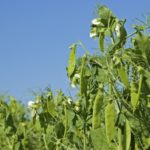Reading Time: 3 minutes Pea researchers have a new focus on protein as plans for the world’s largest protein-based pea-processing plant move ahead in Portage la Prairie, Man. Last January, Roquette, a French specialty food and pharmaceutical supplier, announced construction of the $400-million plant, expected to employ 150 people and process up to 125,000 tonnes of peas each year. […] Read more

Pea processor wants more protein
Mean protein in western Canadian peas peaked at 24.7 per cent in 2007, but declined to 22.1 per cent last year

Infections of peas versus lentils
Pea fields surveyed were either not infected or fully infected, with little in between
Reading Time: < 1 minute Sherrilyn Phelps’ first day with Sask Pulse was July 7, 2014. By 8 a.m. that morning, she’d already fielded her first call on root rot. It was a sign of things to come. Lentils and peas are both very susceptible to aphanomyces, Phelps told CropSphere delegates in Saskatoon this winter. Some other pulses, such as […] Read more

Peaola continues to show promise
On their own, the peas and canola may only produce 60 per cent of normal, but that still adds up to a 120 per cent yield
Reading Time: 5 minutes Intercropping sometimes gets a bad rap from producers. For one thing, crop insurance often doesn’t cover intercropped mixtures, so if one or both crops fail, they’re out of luck. For another, yield benefits don’t always outweigh the extra legwork required at planting and harvest. But the promise of intercropping is that some crops can be […] Read more


